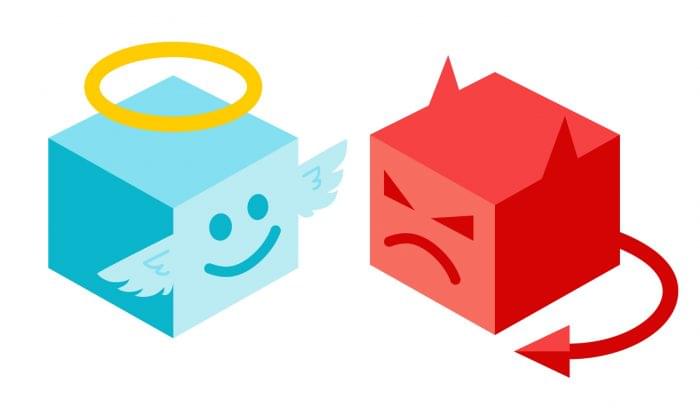One of the flaws that can exist with any company is bias. Oftentimes bias is something that is part of a natural thought process. Whether conscious or unconscious, bias can cause great harm to the company. One must understand how to recognize it and learn how to let go of bias.
A company that does not open up their policies might never have the ability to grow. Instead, they will either stay at the same place they always have been in, or they will eventually fail. Even if they feel as if they have a good succession plan in place.
In order to create a highly successful company, one must learn to eliminate bias. With a good succession plan in place, combating bias is possible.
Unconscious Bias and Halo/Horn Effect
An unconscious bias shoves people into groups without even realizing it. Unconscious bias expands to age, race, height, clothing, accents, gender, hairstyle, and basically everything under the sun. As distasteful as all this might sound, it is unfortunately something that may be hardwired to your brain. This unconscious way of thinking can also be referred to as the Halo/Horn effect.
Imagine interviewing two candidates that coincidentally had the exact same answers to your questions. You end up leaning towards candidate #2 because you had a better feeling about them. After further contemplating your decision you realize that they only difference they had were in their weight, or even their height. Sounds like a weird way to pick a candidate, right?
Unfortunately this way of thinking is often used in decision making quite a bit. The halo (good) and horn (bad) effect is when one characteristic overshadows all other characteristics. An example of the halo/horn effect is when someone with an accent that irritates you but has excellent talents loses out to someone with a regular accent and subpar talents.
The best way to combat this type of bias is to keep a thorough record of each employee’s performance. Having something to look at, as opposed to going off memory or even your personal opinion will give everyone a fair chance. Having an accent or being short does not mean that someone won’t have much to contribute to the company. Evaluating their performance will give you a consistent idea what each position requires.
How succession planning can help
The point of a good succession plan is to identify important skills needed for key positions within your company to either hire candidates with those skills or train employees to learn skills in order to fill the position. Succession planning prepares the company for loss of key personnel as well as develops existing talent using a methodical approach that can overcome bias.
Employees with different ways of thinking and different backgrounds can challenge each other to be more creative and productive. A good mentee can propose different perspectives to their mentor and the company and vice versa. These ideas produced out of diverse relationships spark new products or services that might never have existed otherwise.
Keep in mind that when creating a good succession plan, not to just gravitate towards people that you have worked with before and someone you might view as “the shining star.” Succession plans should be made for every position in your company, and every employee should have a plan that they are following to grow and progress up the ranks.
Although, someone with outstanding performance should be given special consideration, you musn’t be limited in only choosing them as a candidate. Nor should you limit your decision only to those that you have worked with before. By limiting your decision you also limit the company’s capability to grow.
If you limit your choices while making your succession plan, you might never be able to tap into other potential talent available within the company. In addition to that, overlooking other employees within the company may result in them not wanting to work for your company anymore and driving the retention rate down.
Diversifying employees in your Succession plan
While succession planning is a very efficient way to keep a business thriving, not all plans are perfect. If you have someone in management that exemplifies “a perfect employee,” it might be tempting to place someone similar as part of their succession plan. By looking only at the positive aspects of choosing a clone, you could be missing out on tons of opportunities. A good company is a company that welcomes diversity.
When Sam Walton, the founder of Walmart, first pitched his idea to start a chain of retail stores to Ben Franklin executives he was shot down. Not giving up, Walton formed a team with different skill sets who collectively created the successful empire it is now. If he hadn’t expanded his original idea to include diverse skill sets, he might never have been able to innovate.
By constantly sticking with the same kind of people, the company will never evolve. If everyone always agrees, then there will never be any “how about” or “why” questions presented. Those kinds of questions produce more options, perspectives and an overall creative thinking within the culture-which leads to innovation.
Remember, most biases come from preconceived notions. By opening your doors to diversity, your company can only go up from there. Not only should diversity be promoted with leadership but throughout the entire company. Eliminating all forms of bias might not happen overnight. But, with a good succession plan consisting of diversity and thorough records you can make your company all the more successful.
TechnologyAdvice has human resources software to help you get recruit top candidates, track performance, and get the right leaders into the right positions. Need help choosing a HR software? Visit our Product Selection Tool for HR software or click on the image below to get started.
Isabella Ang is a content marketing specialist at ProSky, a company that gives you the ability to innovatively evaluate candidates and develop employees through succession pathways, so you can recruit, hire, and retain the best diverse talent & culture fit. When she’s not working on her next or ongoing projects for ProSky; she spends her days rock climbing, practicing yoga, completing her degree in Computer Science, and tutoring writing skills.

